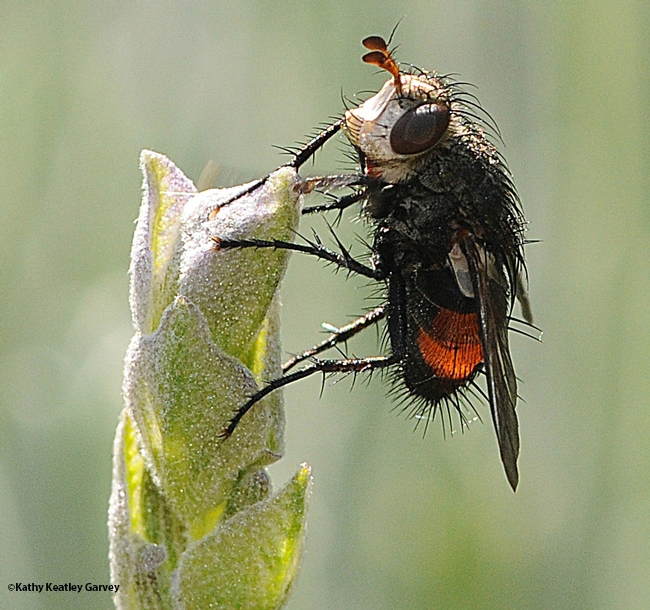- Author: Kathy Keatley Garvey
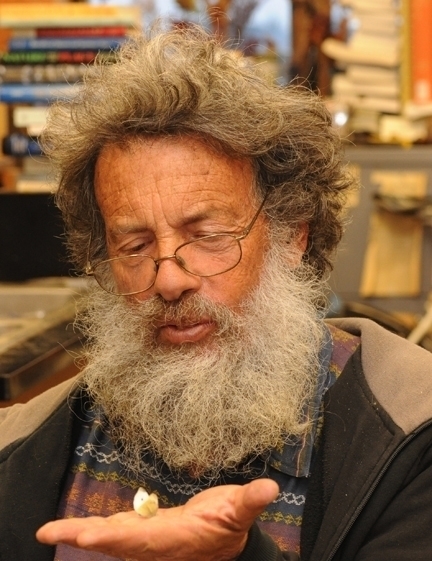
“It's of special interest this year because as of a few days ago the bug was still flying and laying eggs, which will result in non-diapause pupae,” said Shapiro, a noted butterfly expert who researches biological responses to climate change. “Depending on the weather, that could mean an earlier-than-usual emergence. There is even a slight chance the fall brood is not over yet...”
Shapiro, a member of the Department of Evolution and Ecology faculty, has sponsored the “Suds for a Bug” contest since 1972 to determine the Pieris rapae's first flight of the year in the three-county area of Sacramento, Solano and Yolo. He launched the contest as part of his long-term studies of butterfly life cycles and climate change.
P. rapae is emerging earlier and earlier as the regional climate has warmed, said Shapiro. "Since 1972, the first flight of the cabbage white butterfly has varied from Jan. 1 to Feb. 22, averaging about Jan. 20."
Shapiro, who has monitored butterfly populations of central California since 1972 and maintains a research website at http://butterfly.ucdavis.edu/, says the point of the contest "is to get the earliest possible flight date for statistical purposes. The rules require that the animal be captured and brought in alive to be verified. That way no one can falsely claim to have seen one or misidentify something else as a cabbage white."
The contest rules include:
- It must be an adult (no caterpillars or pupae) and be captured outdoors.
- It must be brought in alive to the Department of Evolution and Ecology office, 2320 Storer Hall, UC Davis, during work hours, 8 a.m. to 5 p.m., Monday through Friday, with the full data (exact time, date and location of the capture) and the contact information of the collector (address, phone number and/or e-mail.) The receptionist will certify that it is alive and refrigerate it. (If it's collected on a weekend or holiday, it can be kept in the refrigerator for a few days--do not freeze it.)
- Shapiro is the sole judge.
The professor said P. rapae inhabits vacant lots, fields and gardens where its host plants, weedy mustards, grow. The male is white. The female is often slightly buffy; the "underside of the hindwing and apex of the forewing may be distinctly yellow and normally have a gray cast,” Shapiro said. “The black dots and apical spot on the upperside tend to be faint or even to disappear really early in the season.”
Shapiro, who monitors butterfly populations in the field for more than 200 days of the year, usually wins the contest. He has been defeated only four times and those were by UC Davis graduate students. Adam Porter won in 1983; Sherri Graves and Rick VanBuskirk each won in the late 1990s; and Jacob Montgomery in 2016. The first three were his own graduate students.
A fellow of the American Association for the Advancement of Science, the Royal Entomological Society and the California Academy of Sciences, Shapiro is the author of A Field Guide to Butterflies of the San Francisco Bay and Sacramento Valley Regions, illustrated by Tim Manolis and published in 2007 by the University of California Press
Recent Beer-for-a-Butterfly Contest statistics:
- 2022: No official contest due to the COVID pandemic, but Shapiro recorded his first-of-the-year P. rapae at 1:25 p.m. on Jan. 19 in West Sacramento, Yolo County
- 2021: No official contest due to the COVID pandemic, but Shapiro collected his first-of-the-year at 1:55 p.m. Jan. 16 on the UC Davis campus, Yolo County
- 2020: Technically, no winner, as Shapiro did not collect the one he spotted in Winters, Yolo County at 11:16 a.m. on Jan. 30 at the Putah Creek Nature Park. "It flew back and forth across Putah Creek and then departed the area, flying out of reach above the trees," he noted. He waited around for 90 minutes to see if it would return. It did not.
- 2019: Shapiro collected the first cabbage white butterfly near the Suisun Yacht Club, Suisun City, Solano County, at 1:12 p.m., Friday, Jan. 25. "It was the earliest recorded in Suisun City in 47 seasons."
- 2018: Art Shapiro collected the winner in West Sacramento
- 2017: Jan. 19: Art Shapiro collected the winner on the UC Davis campus
- 2016: Jan. 16: Jacob Montgomery collected the winner in west Davis
- 2015: Jan. 26: Shapiro collected the winner in West Sacramento
- 2014: Jan. 14: Shapiro collected the winner in West Sacramento
- 2013: Jan. 21: Shapiro collected the winner in West Sacramento
- 2012: Jan. 8: Shapiro collected the winner in West Sacramento
- 2011: Jan. 31: Shapiro collected the winner in Suisun
- 2010: Jan. 27: Shapiro collected the winner in West Sacramento
Shapiro nets many of the winners in mustard patches near railroad tracks in West Sacramento, Yolo County.
As a caterpillar, the insect is a pest of cole crops such as cabbage. UC Statewide Integrated Pest Management Program (UC IPM) says the cabbageworm is active throughout the year in California. "Cabbageworm larvae chew large, irregular holes in leaves, bore into heads, and drop greenish brown fecal pellets that may contaminate the marketed product. Seedlings may be damaged, but most losses are due to damage to marketed parts of the plant," according to the UC IPM website.
Related Link:
Research Publication on Non-Diapause Overwintering Cabbage White Butterfly and Anise Swallowtail
Non-Diapause Overwintering by Pieris rapae (Lepidoptera: Pieridae) and Papilio zelicaon (Lepidoptera: Papilionidae) in California: Adaptiveness of Type III Diapause-Induction Curves by Art Shapiro, published in 1984 in Psyche: A Journal of Entomology (open access article)
First paragraph: "Diapause is generally regarded as a physiological adaptation which increases the probability of surviving the adverse season, and thus of reproducing after it is over. Many insect species show geographic differences in the environmental regimes which induce or inhibit diapause (e.g., critical photoperiod) and in the strength of the diapause induced. Such interpopulational differences are commonly viewed as "fine tuning" to local climates, accomplished by natural selection and reflecting a genetic basis (e.g., Istock, 1981). Intrapopulational differences in photoperiodic sensitivity and diapause strength (e.g., chilling requirement) also occur, and have been interpreted as polymorphisms which "spread the risk" of environmental uncertainty over the population (cf. Bradshaw 1973, Shapiro 1979, 1980a). In multivoltine insects in seasonal climates, offspring produced by the last seasonal generation of adults are commonly induced to enter diapause by specific combinations of environmental factors; in mid-latitudes these are likely to be decreasing photophase/increasing scotophase and decreasing or consistently low night temperatures. Warmer nights tend to shorten the critical photoperiod for a given population, or may effectively inhibit diapause altogether under field conditions." (See more)
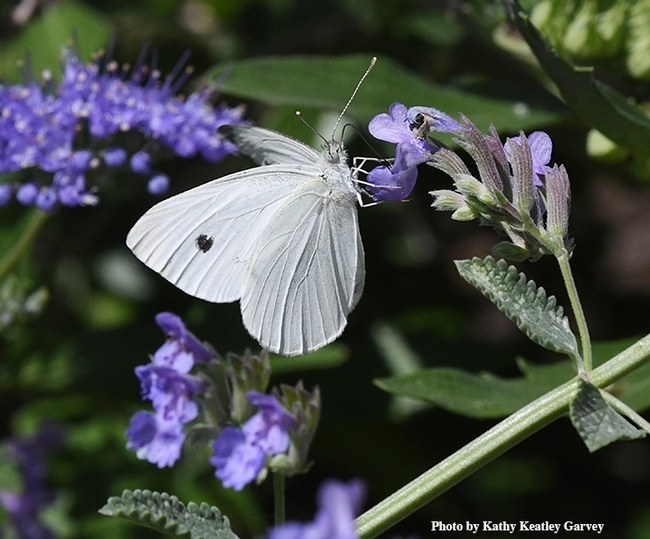
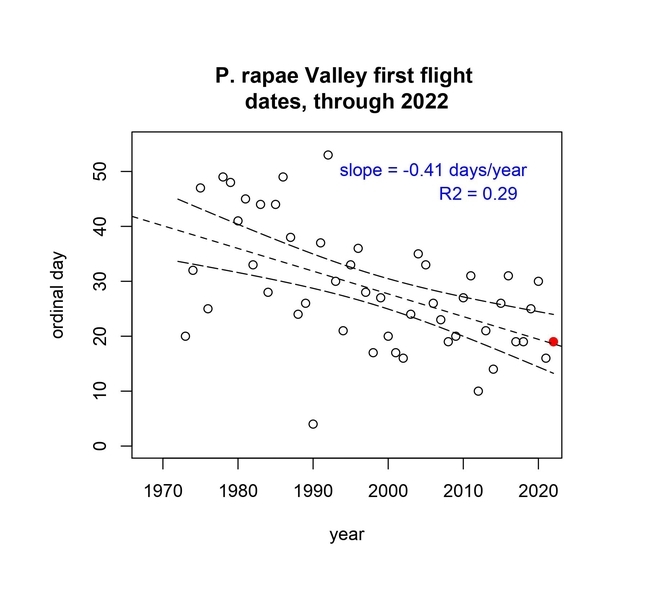
- Author: Kathy Keatley Garvey
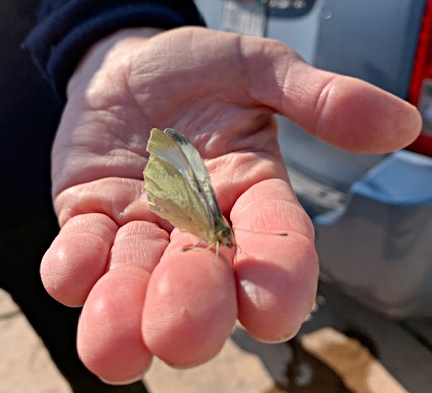
Asher Schneider, a budding entomologist who attends Eliza Sater's second-third grade class at Birch Lane Montessori, Davis, found a cabbage white butterfly, Pieris rapae, at 10:54 a.m., Sunday, Jan. 23 on M Street, Davis.
Asher, the son of Rachel White and Ben Crago-Schneider, spotted the butterfly on salvia (sage). "Sadly this guy looked like he didn't have much time left," White said. "He was just kind of flopping around on the sage."
The family remembered reading about the annual contest in The Davis Enterprise, and emailed a photo to Shapiro.
Shapiro, clearly delighted in the youth's participation in what would have been the 50th annual contest (canceled the last two years due to the COVID pandemic precautions) promptly named him "runner-up."
The first of 2022? Shapiro recorded a P. rapae in West Sacramento at 1:25 p.m. on Wednesday, Jan. 19.
"Pop goes the Pieris!" Shapiro emailed to his colleagues and friends.
Jan. 19 was the day that his colleague-collaborator Matt Forister, the Trevor McMinn Endowed Professor in Biology, Foundation Professor, at the University of Nevada, calculated it would be sighted. Forister, who received his doctorate in ecology (2004) from UC Davis, studying with Shapiro, creates "The First Flight Date" graphs. "And.... as if we had coordinated efforts (which we didn't), here's the graph!" Forister wrote in an email. "Art, you nailed it right on the regression line this time, you deserve an extra beer."
The contest involves collecting the first cabbage white butterfly of the year in the three-county area of Yolo, Sacramento and Solano. The traditional rules: Catch a live cabbage white butterfly in the wild in one of those three counties, deliver it live to Shapiro's department in Storer Hall, UC Davis (with the full data, exact time, date and location of the capture) and if it's the first of the year, the winner receives a pitcher of beer or its equivalent.
Last year Shapiro collected the first of the year in a "non-contest" at 1:55 p.m. Jan. 16 on the UC Davis campus.
Since 1972, the first flight of the cabbage white has varied from Jan. 1 to Feb. 22, averaging about Jan. 20. Shapiro says with climate warming, the species is now emerging a week or so earlier on average than it did 30 years ago here.
P. rapae inhabits vacant lots, fields and gardens where its host plants, weedy mustards, grow. The male is white. The female is often slightly buffy; the "underside of the hindwing and apex of the forewing may be distinctly yellow and normally have a gray cast,” Shapiro says. “The black dots and apical spot on the upperside tend to be faint or even to disappear really early in the season.”
Shapiro has monitored butterfly population trends on transects across central California since 1972 and maintains a research website at http://butterfly.ucdavis.
In its larval form, the cabbage white butterfly, known as "the imported cabbageworm," is a pest of cole crops. "Cabbageworm larvae chew large, irregular holes in leaves, bore into heads, and drop greenish brown fecal pellets that may contaminate the marketed product," according to the UC Statewide Integrated Pest Management Program. "Seedlings may be damaged, but most losses are due to damage to marketed parts of the plant."
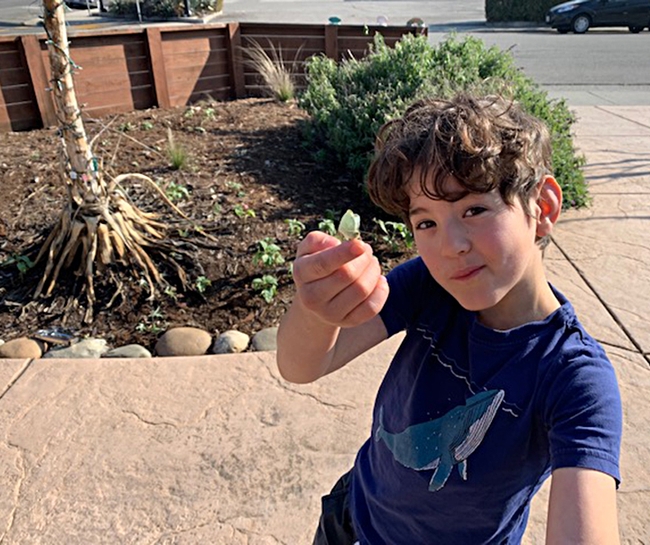
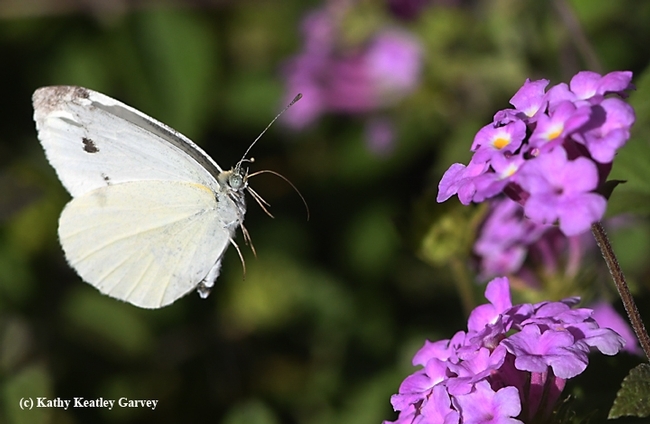
- Author: Kathy Keatley Garvey
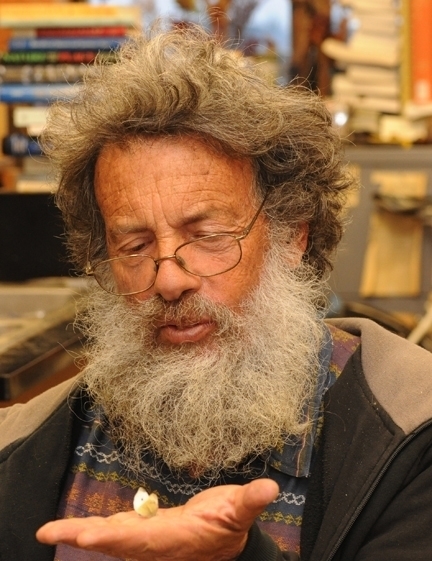
But he'll have a beer anyway!
UC Davis distinguished professor Art Shapiro, Department of Evolution and Ecology, didn't sponsor his annual public "Beer for a Butterfly" contest this year but he recorded his first-of-the-year sighting of a cabbage white butterfly, Pieris rapae, at 1:25 p.m. on Wednesday, Jan. 19 in West Sacramento near a railroad embankment.
"Pop Goes the Pieris!" Shapiro emailed to his colleagues.
And it was exactly the day that his colleague-collaborator Matt Forister, the Trevor McMinn Endowed Professor in Biology, Foundation Professor, at the University of Nevada, calculated it would be sighted.
Forister, who received his doctorate in ecology in 2004 at UC Davis, studying with Shapiro, crafts "The First Flight Date" graphics, using Shapiro's statistics. "And.... as if we had coordinated efforts (which we didn't), here's the graph!" Forister wrote in an email. "Art, you nailed it right on the regression line this time, you deserve an extra beer."
Shapiro, who maintains a research website at http://butterfly.ucdavis.
For scientific purposes, Shapiro seeks the first cabbage-white-butterfly-of-the year in the three-county area of Yolo, Sacramento and Solano. The contest is also known as "Suds for Bugs." The traditional rules: Catch a live cabbage white butterfly in the wild in one of those three counties, deliver it live to his department in Storer Hall, UC Davis (with the full data, exact time, date and location of the capture) and if it's the first of the year, the winner receives a pitcher of beer or its equivalent.
Due to COVID-19 pandemic precautions, however, Shapiro hasn't sponsored the contest for two years. But he's recorded the first ones he's seen.
In his Jan. 19th email documenting the sighting, Shapiro wrote:
"Today was a gorgeous day in West Sacramento--no high or middle clouds for the first time in seemingly forever. The site has the heaviest midwinter Crucifer bloom in many years. In order of abundance: Brassica kaber (wild mustard), Raphanus (wild radish), and B. campestris (field mustard). Also in bloom: Amsinckia (fiddlenecks) and a few Erodium (filaree) and (Lamium amplexicaule) giraffe heads. It looks like late February or even March. The twigs on almond are coloring up. No other tree action noted yet! 61F, N wind 5-10 mph but blocked by the RR embankment. It felt quite warm on the sheltered lee side, but in the open, exposed to the wind, it didn't.
"At 1:25 p.m., I encountered a male rapae dorsal-basking; it took flight at once. Since there is no contest again this year I had no net and there is no specimen. But there we are..." (He also saw a Vanessa atalanta or red admiral butterfly, "so 2 species, 2 bugs," he wrote.)
P. rapae inhabits vacant lots, fields and gardens where its host plants, weedy mustards, grow. The male is white. The female is often slightly buffy; the "underside of the hindwing and apex of the forewing may be distinctly yellow and normally have a gray cast,” Shapiro says. “The black dots and apical spot on the upperside tend to be faint or even to disappear really early in the season.”
Shapiro usually wins his own contest as he knows where to find them. Over the last five years, the contest statistics include:
- 2022, Jan. 19: Art Shapiro collected his first of the year at 1:25 p.m. in West Sacramento (no contest held due to COVID precautions)
- 2021, Jan. 16: Shapiro collected his first of the year at 1:55 p.m. Jan. 16 on the UC Davis campus, Yolo County (no contest held, due to COVID precautions)
- 2020, Jan. 30: Shapiro recorded his first of the year at 11:16 a.m. on Jan. 30 in Winters (he didn't net the butterfly so he said "no winner")
- 2019, Jan. 25: Shapiro collected the winner at 1:12 p.m., Jan. 25 near the Suisun Yacht Club, Solano County.
- 2018, Jan. 19: Shapiro collected the winner at 11:23 a.m. Friday, Jan. 19 West Sacramento, Yolo County
Since 2010, most of the winning butterflies were collected in West Sacramento:
- 2017: Jan. 19: Shapiro collected the winner on the UC Davis campus
- 2016: Jan. 16: Jacob Montgomery, UC Davis graduate student, collected the winner in west Davis
- 2015: Jan. 26: Shapiro collected the winner in West Sacramento
- 2014: Jan. 14: Shapiro collected the winner in West Sacramento
- 2013: Jan. 21: Shapiro collected the winner in West Sacramento
- 2012: Jan. 8: Shapiro collected the winner in West Sacramento
- 2011: Jan. 31: Shapiro collected the winner in Suisun
- 2010: Jan. 27: Shapiro collected the winner in West Sacramento
The butterfly is emerging earlier and earlier as the regional climate has warmed, says Shapiro, whose researches involves biological responses to climate change. "The cabbage white is now emerging a week or so earlier on average than it did 30 years ago here."
Shapiro has monitored butterfly population trends on transects across central California since 1972 and records the information on his research website at http://butterfly.ucdavis.edu/. His 10 sites stretch from the Sacramento River Delta through the Sacramento Valley and Sierra Nevada mountains to the high desert of the Western Great Basin. The largest and oldest database in North America, it was recently cited by British conservation biologist Chris Thomas in a worldwide study of insect biomass.
In its larval form, the cabbage white butterfly, known as "the imported cabbageworm," is a pest of cole crops. "Cabbageworm larvae chew large, irregular holes in leaves, bore into heads, and drop greenish brown fecal pellets that may contaminate the marketed product," according to the UC Statewide Integrated Pest Management Program. "Seedlings may be damaged, but most losses are due to damage to marketed parts of the plant."
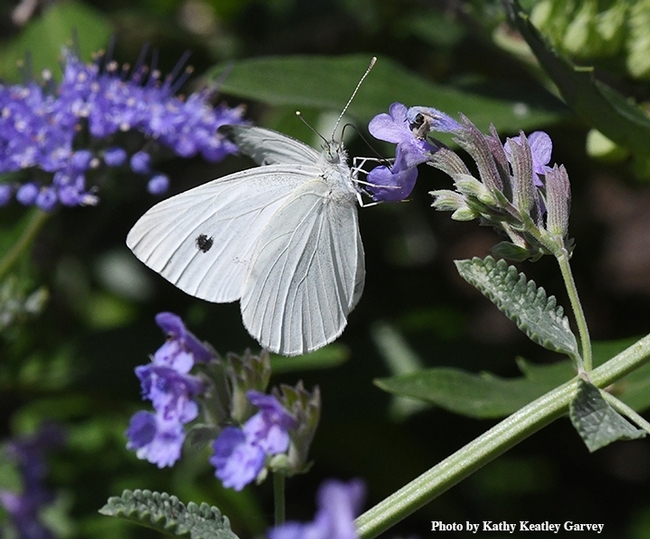
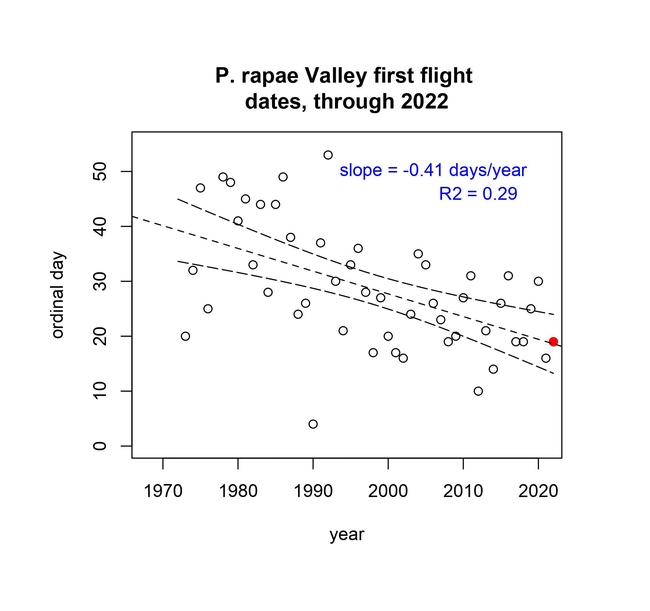
- Author: Kathy Keatley Garvey
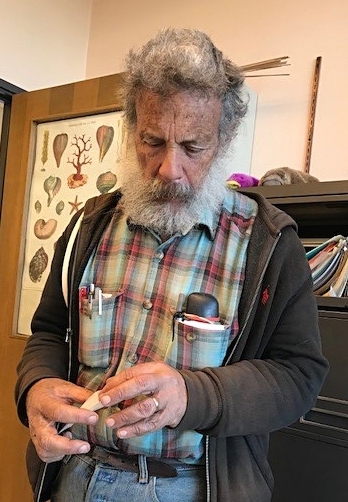
The COVID-19 pandemic precautions and/or lockdown may interfere with it.
"As of now, no," says contest sponsor Art Shapiro, UC Davis distinguished professor of evolution and ecology, who launched the competition in 1972.
Remember the contest?
For scientific purposes, the UC Davis professor seeks to determine the cabbage white butterfly's first flight of the year in the three-county area of Sacramento, Solano and Yolo.
The traditional rules: Catch a live cabbage white butterfly, Pieris rapae, in the wild in one of those three counties, deliver it live to his department office, 2320 Storer Hall, UC Davis (during work hours, 8 a.m. to 5 p.m., Monday through Friday, with the full data, exact time, date and location of the capture) and if it's the first of the year, you win a pitcher of beer or its equivalent.
Shapiro, who maintains a research website at http://butterfly.ucdavis.
The butterfly inhabits vacant lots, fields and gardens where its host plants, weedy mustards, grow. The male is white. The female is often slightly buffy; the "underside of the hindwing and apex of the forewing may be distinctly yellow and normally have a gray cast,” Shapiro says. “The black dots and apical spot on the upperside tend to be faint or even to disappear really early in the season.”
Shapiro or his graduate students have often won the contest.
Shapiro has monitored butterfly population trends on a transect across central California since 1972 and records the information on his research website at http://butterfly.ucdavis.edu/.
Shapiro, a member of the UC Davis faculty since 1971 and author of the book, Field Guide to Butterflies of the San Francisco Bay Area and Sacramento Valley Regions, has studied more than 160 species of butterflies in his transect.
So suds for a bug in 2022? Well, maybe you can welcome in the New Year with suds...without a bug...
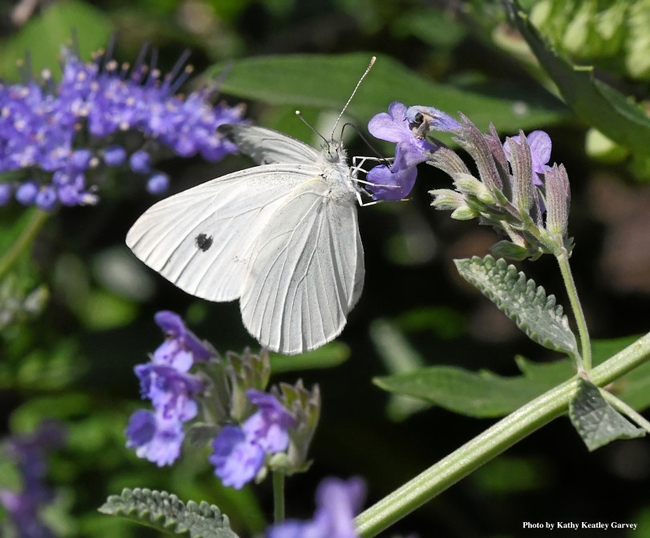
- Author: Kathy Keatley Garvey
If it's Friday, it must be "Friday Fly Day!"
And a perfect day to post an image of a fly.
This is a female tachinid, genus Peleteria, in the family Tachinidae. It is perched on a lavender in Vacaville, Calif. The genus is characterized by two prominent setae in front of the lower part of the eye.
I've seen tachinids lay eggs in monarch caterpillars and in monarch chrysalids. The fly larvae eat the host from the inside out. The hostess with the mostest?
However, tachinids are considered important biological controls because they lay their eggs in such pests as cabbage white butterfly larvae (Pieris rapae).
See the UC Statewide Integrated Pest Management website for more on tachinids.
Interesting critters, don't you think?
